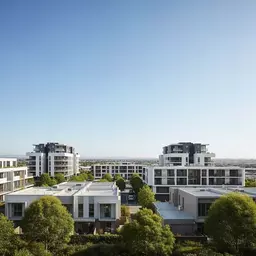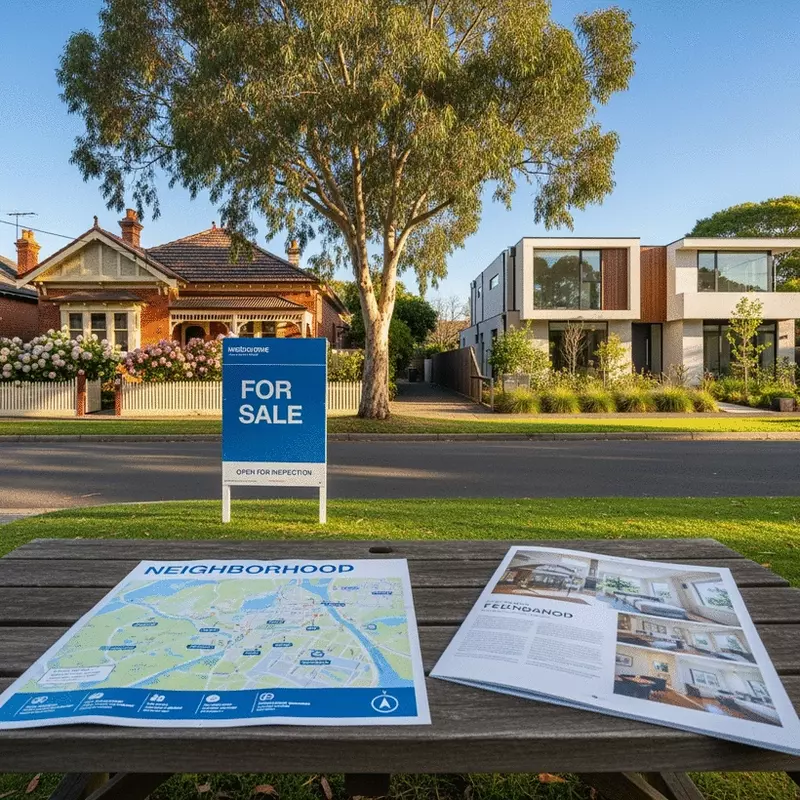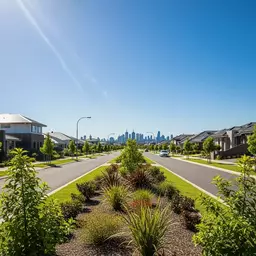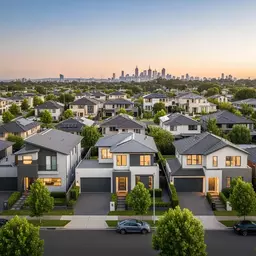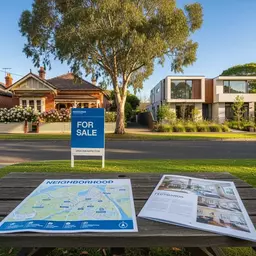Melbourne Property Market Insights 2025

As the Melbourne property market continues to evolve, understanding its trends and indicators becomes essential for making informed decisions. Ready to dive in?
What You Will Learn
- The current median house price in Melbourne is around $1 million, reflecting strong demand.
- Projected price growth for houses is anticipated at 5-6% over the next year.
- Key economic indicators such as interest rates and local economic growth significantly affect the property market.
- Suburbs like Yarraville and Coburg are emerging as promising areas for investment due to community appeal and rising values.
- The rental vacancy rate in Melbourne is currently at 2%, indicating a competitive rental environment.
- Understanding demographic trends helps identify growing markets, particularly among young professionals and families.
Melbourne Property Market at a Glance (2025 Forecast)
An overview of current and projected trends in Melbourne's property market, highlighting key statistics and growth forecasts for houses and units.
Current Market Performance
Median House Price: $1 Million
Median Unit Price: $650,000
Annual Price Growth: 4% (Houses), 3% (Units)
Projected Growth (Next Year)
House Prices: 5-6% Increase
Unit Prices: 4-5% Increase
Key Economic Indicators
- Economic Growth: Strong
- Interest Rates: Low (encouraging borrowing)
- Demographics: Increased demand (young professionals/families)
Understanding the Melbourne Property Market Trends in 2025
As we look ahead to 2025, the Melbourne property market continues to exhibit dynamic trends that are essential for homeowners, investors, and renters to understand. Currently, the median house price in Melbourne sits around $1 million, while units are valued at approximately $650,000. These figures reflect not only the city's vibrancy but also the continuous demand for properties in its diverse suburbs.
Interestingly, we’ve observed a slight increase in prices over the past year, which signals a resilient market despite broader economic fluctuations. It's crucial to stay informed as these statistics can directly impact your real estate decisions. For a comprehensive overview of the state housing system, you can refer to the Annual Report on the State of the Housing System.
Overview of Current Market Performance
- Median house price: $1 million
- Median unit price: $650,000
- Annual price growth: 4% for houses, 3% for units
- Rental vacancy rate: 2% - indicating a competitive rental market
With these insights, it’s clear that Melbourne's suburbs are still highly sought after, particularly areas with excellent amenities and transport links. For instance, suburbs like Yarraville and Footscray have become increasingly popular due to their cultural offerings and community vibe. Understanding these trends can help you make informed choices, whether you’re buying, renting, or investing. Further details on property sales statistics can be found at Land Use Victoria.
Forecasting Property Price Movements
Looking forward, projected growth rates for both houses and units suggest that we might see an increase of around 5-6% in the next year. Compared to other major Australian cities, Melbourne stands out with its steady upward trajectory, often outperforming cities like Sydney and Brisbane in terms of affordability and lifestyle offerings.
- Projected house price growth: 5-6%
- Projected unit price growth: 4-5%
- Comparison with Sydney: Higher growth rates in suburbs
- Brisbane's rental market is tightening, affecting overall investment strategies
These forecasts indicate that investing in Melbourne’s property market might be a wise decision, especially for those looking to capitalize on growth opportunities. As Clara Lindstrom from My Metro Life often emphasizes, it’s not just about the numbers; it’s about choosing the right location that aligns with your lifestyle and investment goals. You can also monitor the Total Value of Dwellings for the latest release on property prices.
Key Economic Indicators Influencing the Melbourne Property Market
Several economic factors play a significant role in shaping property market trends in Melbourne. Economic growth, interest rates, and demographic shifts are just a few elements that can impact the performance of the real estate market.
- Economic growth: Strong local economy supporting job creation and migration.
- Interest rates: Current low rates encourage borrowing and drive market demand.
- Demographic factors: Increased demand from young professionals and families seeking suburban living.
These indicators continually affect buyer sentiment and market dynamics. Keeping an eye on these trends can significantly enhance your understanding of when and where to invest in Melbourne's property market.
Pro Tip
When considering an investment in the Melbourne property market, don't just focus on current prices. Look at historical data and trends in specific suburbs to identify areas with strong growth potential. Engaging with local real estate agents can also provide invaluable insights into upcoming developments and community plans that could influence property values.
Summarizing Key Insights for Melbourne Property Buyers and Investors
As we reflect on the insights gleaned from our exploration of the Melbourne property market, several key findings stand out. The current landscape is characterized by a mix of rising demand and shifting buyer preferences. Notably, we’ve observed that median house prices have been on a consistent upward trajectory, influencing both buyers and investors alike. Moreover, the focus on suburban living continues to reshape market dynamics, especially in light of the ongoing trend towards remote work.
For those looking to navigate this evolving environment, the main takeaways include:
- Understand the role of economic indicators: Keep an eye on interest rates and government policies that can significantly impact property affordability.
- Identify growth suburbs: Investing in areas like Yarraville and Coburg, known for their vibrant communities and increasing property values, can lead to promising returns.
- Stay informed about rental trends: Anticipating shifts in rental prices can help investors make timely decisions.
By staying informed and proactive, you can make savvy decisions that align with your property goals. At My Metro Life, we strive to empower you with the insights needed to confidently navigate the Melbourne real estate landscape!
Encouraging Engagement and Future Considerations
To enhance your understanding of the Melbourne property market, we encourage you to engage with interactive elements such as charts and heatmaps. These tools can visually represent market trends, making it easier to identify opportunities and challenges. Keeping up with these visual aids will not only inform your decisions but also provide a clearer picture of how the market is evolving.
Additionally, consider subscribing to our newsletter for regular updates and insights. This way, you’ll always be in the loop about the latest developments in Melbourne’s real estate landscape, ensuring you never miss out on a valuable opportunity!
Frequently Asked Questions
As property buyers, renters, and investors embark on their journeys, they often have common questions regarding the Melbourne property market. Here are some answers to frequently asked questions:
- What is the current median house price in Melbourne? The current median house price in Melbourne is approximately $1 million.
- What are the projected growth rates for Melbourne property prices next year? House prices are projected to increase by 5-6%, and unit prices by 4-5% over the next year.
- Which economic factors most influence the Melbourne property market? Key factors include economic growth, interest rates (especially low rates encouraging borrowing), and demographic shifts such as increased demand from young professionals and families.
- What are some promising suburbs for investment in Melbourne? Suburbs like Yarraville and Coburg are highlighted as promising areas due to their community appeal and rising values.
- What is the current rental vacancy rate in Melbourne? The rental vacancy rate is currently at 2%, indicating a competitive rental environment.
Neighborhood Insights: Choosing the Right Location
Choosing the right neighborhood is crucial for both buyers and investors. As we delve into Melbourne's diverse suburbs, consider these promising areas based on varying demographics and investment goals:
- South Yarra: Ideal for young professionals looking for vibrant urban living.
- Footscray: A great option for families, offering good schools and community amenities.
- Reservoir: Attracting first-time buyers with its affordability and accessibility to public transport.
Each suburb offers unique benefits, catering to different lifestyle preferences and investment strategies. As a property expert, I encourage you to explore these neighborhoods and discover where you can best plant your roots or grow your investment portfolio!
Recap of Key Points
Here is a quick recap of the important points discussed in the article:
- Current Market Performance: Median house price in Melbourne is around $1 million, with units at $650,000.
- Price Growth: Projected growth rates suggest an increase of 5-6% for houses and 4-5% for units in the next year.
- Key Economic Indicators: Economic growth, low interest rates, and demographic shifts are driving market demand.
- Investment Opportunities: Focus on growth suburbs like Yarraville and Coburg for promising returns.
- Stay Informed: Monitor rental trends and economic factors to make informed property decisions.

